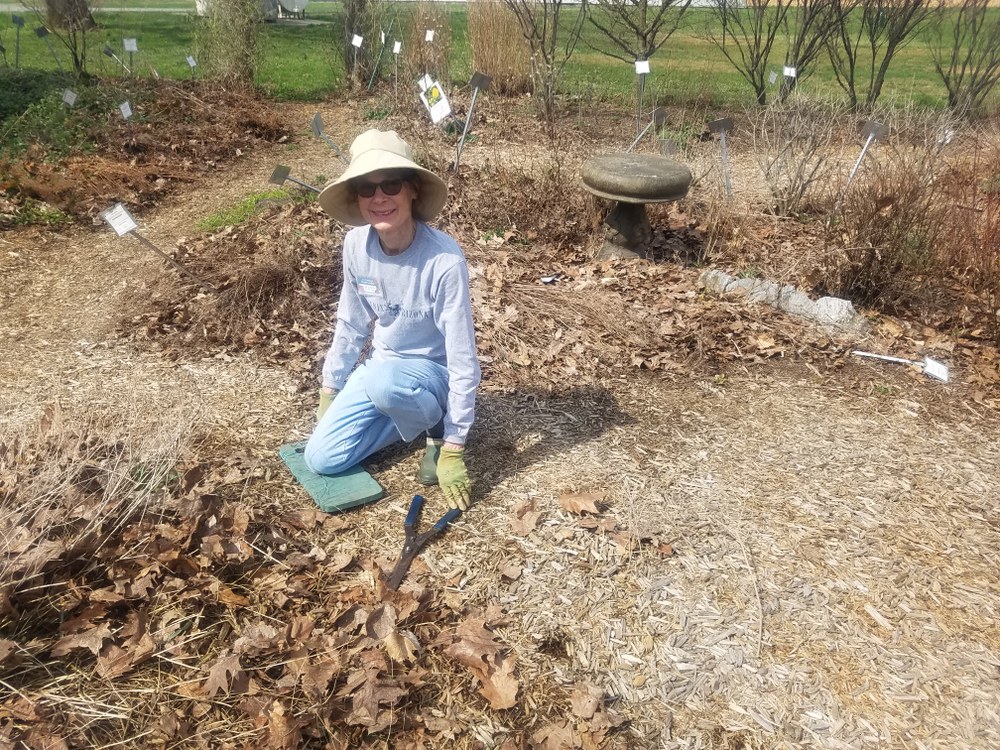Posted: February 26, 2021
Gardening involves things that can be done every year at the same time. Though the annual weather may influence the timing of these tasks, here are the things to do in early spring,

Photo credit: Pam Hall
Resist the Urge to Work Wet Soil.
In March, many are getting that itch to work in their gardens. But many areas are still soggy from snow melt and rain, making soils too wet to work. Even using only a garden spade, working wet soil can badly compact soil and the negative effects will last for many years. Working wet soil will pack particles tightly, leaving less room for water and air to penetrate. Compacted soil makes it more difficult for plant roots to move through the soil. For more details see Resist the Urge to Work Wet Soil.
Determine whether your garden is dry enough to work.
dig a trowel full of soil and squeeze it in your hand. If it crumbles through your fingers when squeezed is ready to garden. If it forms a muddy ball, it is too wet to work so give the soil a few days to dry and sample again later.
Early spring is a great time to spring clean your garden.
Start by clearing away last year's plant debris.
Cut back ornamental grasses. To make it easier you can bundle and tie stems together before cutting to the ground. Cut back the stems of summer flowering perennials but do not chop these stems just yet. Cut, hollow stems may harbor the overwintering pupae of stem-nesting bees and other beneficial insects. Give insects time to emerge before chopping up the stems for compost bin. See Delay Garden Cleanup to Benefit Overwintering Insects.
Remove excess leaves and winter mulch.
from ornamental beds but leave a thin layer of leaves or mulch covering the ground. Mulch and leaves are good but in early spring too thick a layer impedes growth.
Broadleaf weeds are easily removed from moist soils at this time of year.
This is the idea time to pull hairy bittercress, chickweed, deadnettle, henbit, and invasive biennial garlic mustard.
Prepare garden soil by adding compost.
One of the benefits of native plants is that they have evolved and adapted to the climate and soil and do not need to be fertilized. Adding compost enriches the soil, helps to retain moisture, suppress plant diseases. It encourages the production of beneficial bacteria and fungi and reduces the need for chemical fertilizers. Apply 1 inch of compost to beds.
Early spring is a good time to plant new trees and shrubs.
Consider growing conditions--sun, shade, moist dry. Dig a shallow broad planting hole, as much as three times the diameter of root ball or container. It is important to make the hole wide because the roots of newly establishing tree/shrub must push through the surrounding soil to sustain. Tree/shrub roots grow out not down. Then mulch the newly planted tree but keep mulch 12 inches away from tree trunk. Water regularly. See Planting Landscape Trees.
A special word about container trees and shrubs
fix those roots before you plant:
Most trees and shrubs are sold in small plastic containers. One problem with container trees has to do with expanding root system. As roots grow, they hit the side of the container and turn, and soon the pot is full of circling roots become pot bound. This is resolved by cutting the roots with a knife. Do not tear roots; torn roots do not regenerate.
Container trees and shrubs are often planted too deep in the pot.
Do not plant trees and shrubs too deep. Plant at soil level or slightly higher to ensure good drainage.
Remember that all of these gardening projects for March can be done in April if soil too wet. Use the time to fine tune your new garden plans. We hope it will include native plants. Check out these useful Native Plant References at the Cumberland County Master Gardener site.

